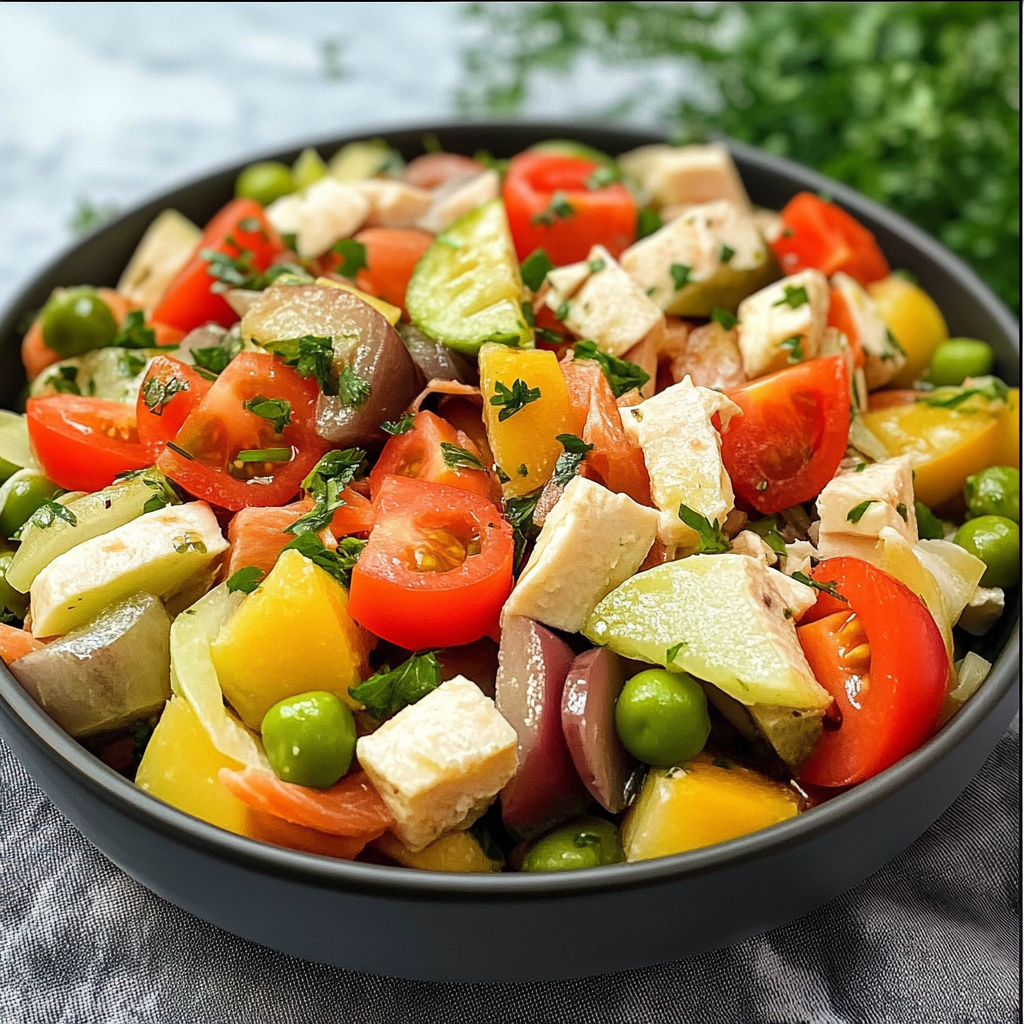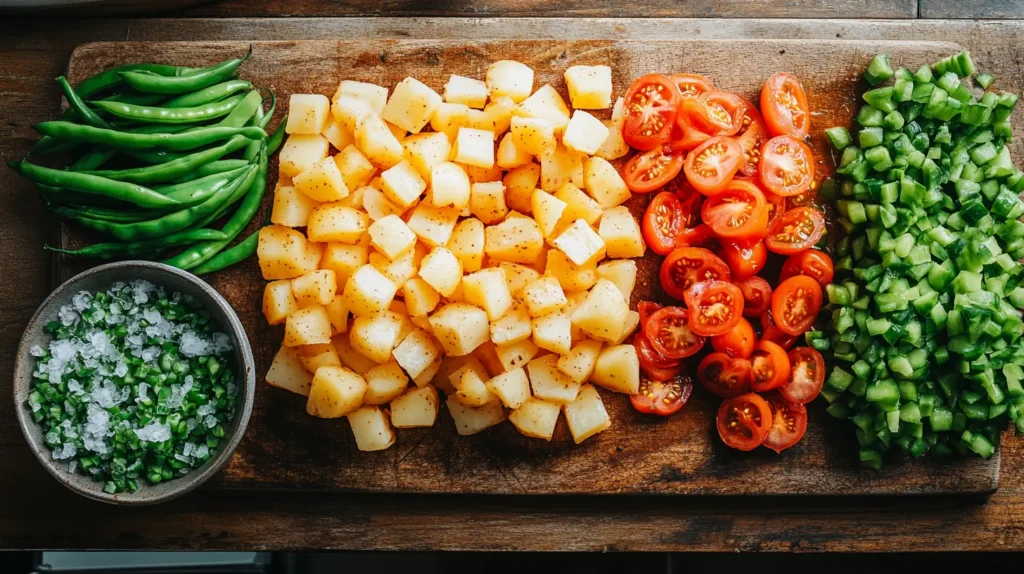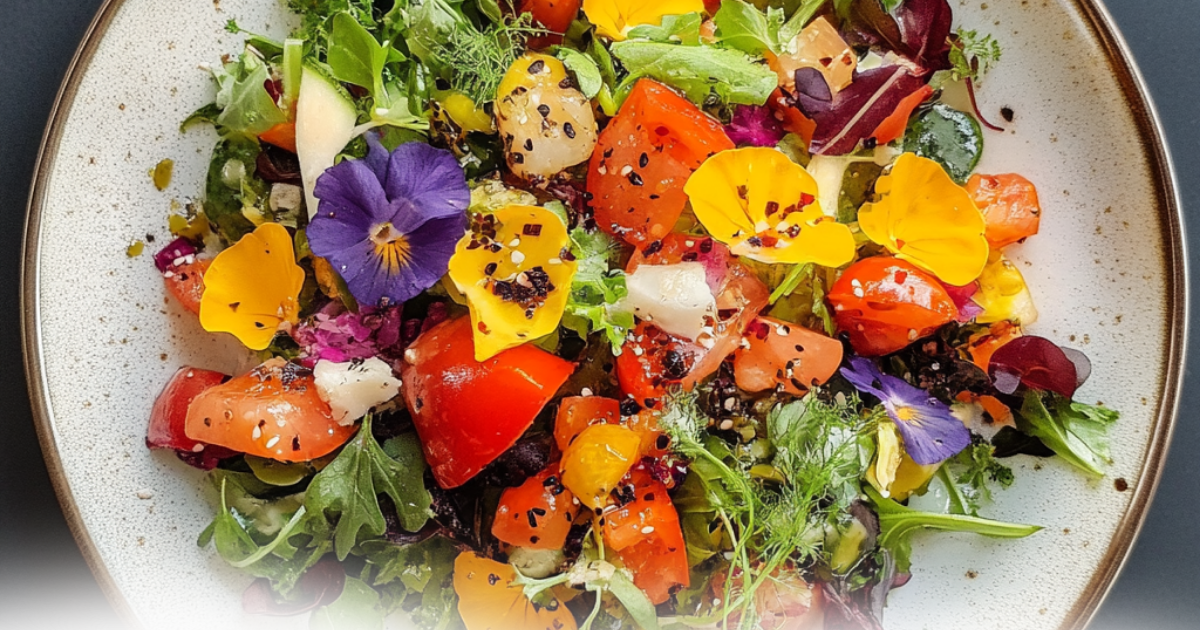Ensalada campera, a delightful Spanish dish, is much more than a simple salad. It’s a reflection of rural Andalusian culture, bringing together fresh, wholesome ingredients in a symphony of flavors and textures. This article dives into everything about ensalada campera—its origins, ingredients, preparation, and even tips for storing and serving it. Whether you’re new to Spanish cuisine or looking to perfect this summer favorite, you’ll find everything you need right here.
Table of contents
Introduction to Ensalada Campera
What is Ensalada Campera?
Ensalada campera, also known as the Spanish country salad, is a classic dish rooted in the rustic kitchens of southern Spain. It combines tender potatoes, crisp vegetables, and hearty tuna into a vibrant, satisfying meal that’s perfect for warm weather. The name “campera” translates to “country,” reflecting the dish’s origins in rural Andalusia, where fresh, local ingredients were essential.

This salad is not just a treat for the taste buds—it’s a celebration of simplicity and tradition. Each bite offers a balance of textures: the creaminess of potatoes, the crunch of fresh peppers, and the richness of olive oil. It’s no wonder that ensalada campera has become a beloved staple in Spanish homes.
Historical Background of the Dish
The history of ensalada campera is as humble as its ingredients. This salad was born in Spain’s countryside, where farmers made the most of what was available. Traditionally, it featured ingredients like potatoes, onions, tomatoes, and olives, which were abundant in the region. Over time, modern additions like tuna and eggs found their way into the recipe, adding extra protein and making it a more filling dish.
Today, ensalada campera is enjoyed year-round, but its refreshing quality makes it especially popular during the summer months. It’s a go-to for picnics, family gatherings, and tapas menus, proving that the simplest recipes often have the most enduring appeal.
Key Ingredients of Ensalada Campera
Core Ingredients
The heart of ensalada campera lies in its simple yet flavorful ingredients. Potatoes form the base, providing a soft and satisfying texture that absorbs the dressing beautifully. Fresh vegetables like tomatoes, onions, and green peppers add vibrant color and crunch, while olives lend a salty bite that enhances the overall flavor.

Canned tuna, packed in olive oil or brine, is another key ingredient, offering a protein-rich component that transforms the dish into a hearty meal. Hard-boiled eggs, often sliced or quartered, bring a creamy richness that balances the fresh vegetables. These ingredients are not only staples in Spanish cuisine but also give ensalada campera its iconic taste and texture.
Optional Ingredients and Substitutions
One of the best things about ensalada campera is its flexibility. While the core ingredients are a must, you can tweak the recipe to suit your preferences. Instead of green peppers, you might choose red or yellow ones for a sweeter flavor. Onions can be swapped for shallots or omitted entirely if you prefer a milder taste.
For those avoiding tuna, other options like canned salmon or chickpeas work well as substitutes. Vegetarians can skip the eggs and tuna, focusing on the vegetables and adding protein with beans or tofu. Some variations include herbs like parsley or basil to brighten the flavor or a splash of lemon juice for extra zest.
No matter how you customize it, the essence of ensalada campera remains unchanged—fresh, wholesome, and satisfying.
How to Make Ensalada Campera (Step-by-Step)
Preparation of Vegetables
Making ensalada campera begins with prepping the vegetables. Start by boiling the potatoes until they’re tender but firm enough to hold their shape. Let them cool completely before cutting into bite-sized pieces. Similarly, green beans should be boiled briefly and cooled in cold water to preserve their vibrant color and crispness.

Next, dice the tomatoes, removing the seeds if desired, for a cleaner texture. Chop the onions finely for a mild, sharp bite. The peppers should be sliced into thin strips, ensuring even distribution throughout the salad. These steps are crucial to achieving the perfect balance of textures and flavors.
Adding Protein and Dressing
The proteins—tuna and eggs—are what make this salad truly filling. Flake the tuna into large chunks to avoid overmixing, and slice the hard-boiled eggs carefully to maintain their shape. Combine these with the vegetables in a large mixing bowl.
For the dressing, drizzle high-quality olive oil generously over the salad, followed by a pinch of salt. If you like, add a splash of vinegar to give it a subtle tang. Toss gently to coat all the ingredients evenly without breaking them apart.
Final Touches and Resting Time
The final step in preparing ensalada campera is allowing the flavors to meld. Let the salad rest in the fridge for at least an hour before serving. This cooling period not only enhances the taste but also gives the salad a refreshing quality that’s perfect for warm days.
Now, you can answer the question “What is ensalada campera?” with confidence—it’s a masterpiece of simplicity, packed with the best that Spanish cuisine has to offer.
Serving Suggestions for Ensalada Campera
Traditional Pairings
Ensalada campera isn’t just a dish—it’s an experience that pairs effortlessly with a variety of meals. Traditionally, this vibrant Spanish salad is served alongside grilled meats, seafood dishes, or hearty mains like roasted chicken. The light and refreshing flavors of the salad provide a perfect balance to rich or savory foods. It’s also a common accompaniment at summer barbecues, where its simplicity shines.
For tapas enthusiasts, ensalada campera is a delightful addition. Serve it in small portions on toasted bread with a drizzle of olive oil and a pinch of paprika for a flavorful tapa that guests will love. Whether as a side dish or a star in its own right, this salad is versatile and crowd-pleasing.
Creative Serving Ideas
If you’re looking to shake things up, consider some creative ways to enjoy ensalada campera. Use it as a filling for wraps or sandwiches for a quick and nutritious meal. You can even spoon it onto lettuce leaves for a light, low-carb option. Another fun idea is to serve it layered in jars for an eye-catching picnic treat.
The possibilities are endless, making this dish not only delicious but also incredibly adaptable. For more delicious recipes, check out this guide on versatile Spanish salads.
Storing and Preserving Ensalada Campera
Short-Term Storage
Wondering how to keep ensalada campera fresh? The good news is that this salad stores well in the refrigerator for up to three days. Transfer it to an airtight container to prevent it from absorbing other flavors in the fridge. Be sure to mix it gently before serving to redistribute the dressing and freshen up the appearance.
This makes ensalada campera a fantastic make-ahead dish for busy days or meal prep. If you’re preparing it in advance for an event, store it without the eggs, adding them just before serving for optimal freshness.
Freezing Tips and Limitations
While ensalada campera can technically be frozen, it’s not the best option. The texture of boiled potatoes and fresh vegetables can change significantly after thawing, leading to a less appealing result. If freezing is your only choice, do so in individual portions and let the salad thaw overnight in the fridge. Always taste and adjust the seasoning after defrosting.
In short, enjoy ensalada campera fresh whenever possible to fully appreciate its vibrant flavors and textures.
Nutritional Value and Benefits of Ensalada Campera
Balancing Macronutrients
Ensalada campera is not just tasty; it’s also a well-balanced meal packed with essential nutrients. The potatoes provide complex carbohydrates, giving you energy while keeping you full. Tuna and eggs contribute high-quality protein, which supports muscle health and keeps hunger at bay. Olive oil, a staple in Spanish cooking, adds healthy fats that are good for your heart and overall wellness.
With its mix of vegetables—like tomatoes, peppers, and onions—this salad is a great source of dietary fiber, which aids digestion. Together, these ingredients make Spanish salad a wholesome, satisfying dish that fits well into a balanced diet. So, if you’ve ever wondered, What is ensalada campera?, you can think of it as both a flavorful treat and a nutritional powerhouse.
Health Benefits of Key Ingredients
The health benefits of Spanish salad come from its fresh, nutrient-rich ingredients. Tomatoes and peppers are rich in vitamins A and C, supporting your immune system and skin health. Tuna is an excellent source of omega-3 fatty acids, which are linked to improved heart and brain function. And let’s not forget olive oil, a key component of the Mediterranean diet, known for its anti-inflammatory properties.
This dish is not only delicious but also a smart choice for those looking to maintain a healthy lifestyle.
How Ensalada Campera Fits into a Healthy Diet
A Perfect Mediterranean Dish
Ensalada campera is part of the Mediterranean diet, known for its fresh and simple ingredients. With olive oil, vegetables, and protein, it’s both healthy and delicious.
This salad helps keep your meals balanced. The mix of healthy fats, fresh veggies, and filling potatoes makes it a great choice for any diet. Serve it with grilled fish or crusty bread for a complete Mediterranean meal.
Frequently Asked Questions About Ensalada Campera
What Does Ensalada Campera Taste Like?
The taste of ensalada campera is a delightful combination of fresh, zesty, and savory flavors. The natural sweetness of tomatoes and peppers balances the saltiness of olives and tuna, while the olive oil dressing ties everything together. Its simplicity lets each ingredient shine, making it a must-try dish.
Can Ensalada Campera Be Made Ahead?
Absolutely! One of the best things about ensalada campera is that it can be prepared ahead of time. In fact, letting it rest in the fridge for a few hours allows the flavors to blend beautifully. Just make sure to add the eggs right before serving to keep them fresh and vibrant.
What Are the Best Variations of the Recipe?
While the classic recipe is hard to beat, there are endless variations to try. Swap tuna for grilled chicken or chickpeas for a vegetarian twist. Add herbs like parsley or basil for extra flavor. You can even experiment with a tangy mustard-based dressing for a modern spin.

